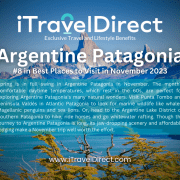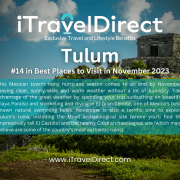Budapest #6 in Best Places to Visit in November 2023
Why Go To Budapest
Welcome to Budapest. To put it simply, if you haven’t been here, it’s time you make plans to do so. The city appeals to many: You can step out of a thermal bath and right into a nightclub (and then back into the bath). In a city that dates back to the Old Stone Age, visiting history buffs can take their pick between Roman, neo-Gothic, Renaissance, and Ottoman architecture at sites like Buda Castle and Fisherman’s Bastion.
Budapest is more than just the political capital of Hungary – it’s also the commercial and cultural nexus. From its multifaceted restaurant scene to its rich Jewish heritage, culture extends from nearly every inch of the Pearl of Danube. Split by the Danube River and composed of three main regions – Pest, Buda, and Óbuda – Budapest meshes modern conveniences with ancient architecture and grassy parks. Whether you’re searching for cuisine, shopping or museums, a multitude of all await you in Budapest. And prices are fair enough that you won’t have to choose – you can indulge in them all.
Best Months to Visit
The best times to visit Budapest are from March to May and September through November. These shoulder seasons are when the weather is idyllic and the city isn’t overcrowded with tourists. However, the climate is always relatively mild, with temperatures rarely exceeding bearable levels. July and August experience average highs in the upper 70s, while average lows in January rest in the mid-20s. Tourists flood the city in summer, despite it being the hottest and wettest time of year.
Culture & Customs
Budapest has a rich heritage and tons of culture to go along with it. From sophisticated events, such as operas and symphonies, to a trendy nightlife scene to the historic Castle Hill region, the city offers something for everyone. District VII’s Elizabeth Town neighborhood is a must-visit for culture hounds, as it’s where the majority of Budapest’s Jewish residents reside. Elizabeth Town also hosts the city’s annual Jewish Cultural Festival.
Many Budapest residents speak English (especially the younger generation), so you shouldn’t have trouble communicating during your visit. Hungarian has a reputation for being an extremely difficult language for English speakers to master, but a little effort can go a long way – throw in a “köszönöm” (or thank you, pronounced “kur-sur-nurm”) when you can.
The forint is the currency of Hungary. One forint equals approximately $0.004, or less than one American penny. Exchange rates tend to be advantageous for Americans, though the rate may fluctuate, so it’s best to check the current exchange rate before you go. ATMs are readily available, especially in the city center, and credit cards are also widely used in the central areas of Budapest.
Although tipping isn’t expected here like it is in the U.S., it is more common to leave tips for waiters, taxi drivers and other service workers in Hungary than in other countries in Europe. Tipping 100 to 400 forints (or $0.50 to $1.50) is the norm at thermal baths, while it is customary to give each hotel employee 200 to 500 forints ($1 to $2). Ten percent of your fare or bill is fine to leave for taxi drivers and restaurant waitstaff, though 15 percent for fine dining establishments will be well-received. Make sure a service charge hasn’t already been added to your dining bill.
What to Eat
Dining in Budapest is all about diversity. Have a traditional Hungarian dish for breakfast, American for lunch and authentic Italian for dinner. Experience upscale European fare at traveler favorites like Caviar & Bull and Arany Kaviar Restaurant. For cheaper but just as tasty eats, visitors recommend sitting for a meal at Italian-focused Comme Chez Soi or Greek-inspired Mazi. Fast casual options like Hoppacska and Bors GasztroBar also earn rave reviews from diners.
Two staples of the Hungarian dining experience are gulyás (or goulash, a paprika-flavored soup loaded with meat and potatoes) and paprikás csirke (chicken in a creamy paprika sauce). And you can’t really go wrong with either. Street food is also popular here. You’ll find items like lángos (a large piece of fried dough topped with sour cream and cheese), rántott sajt (fried cheese) and kürtoskalács (or chimney cake, a hollow bread often rolled in cinnamon, nuts or cocoa) sold at markets and food courts throughout the city. And wine lovers, rejoice: Hungary has a proud wine tradition dating centuries back. Try the Egri Bikavér (Bull’s Blood) if you’re looking for a full red.
Safety
While Budapest is a relatively safe big city, you should still exercise general safety precautions, especially in light of recent terrorist activity throughout Europe. Make sure to take extra care on public transportation and at major tourist attractions, where pickpockets are more prevalent. Also, do not walk alone at night and avoid political rallies and demonstrations. For additional safety tips, visit the U.S. State Department’s website.
Getting Around Budapest
The best ways to get around Budapest are on foot and by public transit. The city’s neighborhoods are walkable, and you’ll be able to admire the historic architecture as you stroll. But when it comes to getting across town, rely on Budapest’s extensive public transportation system. However, if you’re making your way home after a night out, avoid getting lost by simply taking a taxi or an Uber.
The city is serviced by the Budapest Ferenc Liszt International Airport (BUD), which is located roughly 15 miles southeast of downtown. Taxis are the quickest way to get from the airport to your hotel, but they are also the most expensive – expect to pay about 6,500 forints (about $25) for a ride. Airport miniBUD shuttle service is cheaper but isn’t as efficient. The most affordable (and most time-consuming mode of transportation) from the airport to the city is the 200E bus, which drops passengers off at the Kobánya-Kispest metro station and costs 350 forints (less than $1.50) per person. There’s also the direct (but pricier) 100E bus. Another popular option is the train. Many of them make the three-hour connection through Vienna.
On Foot
There is only one way to effectively see the vibrant life and population of this city and that is walking through its streets. The entertaining pedestrian traffic can even garner its own photographs. Another bonus: Many of the city’s top sights – especially those in the Buda region – are within walking distance of each other. Just make sure to have a map handy.
Car
With various forms of efficient public transport, Budapest feels a lot smaller than it is. Spring for a taxi when convenient, but avoid renting a car. Driving here tends to be stressful and more hassle than it’s worth. If you do decide to drive, you can rent a vehicle from one of several vendors at the airport. An international driving permit is not needed to drive in Budapest so long as you have a valid U.S. driver’s license and a certified Hungarian translation.
Public Transportation
Budapest’s transportation system, Budapesti Közlekedési Központ (BKK), offers cheap and efficient bus, tram, train, funicular and metro services throughout the city. Make sure to validate your tickets before you get on the metro and as soon as you get on buses and trams, as plain-clothed inspectors can show up out of nowhere, and the fines for not validating can be pretty hefty. Get your tickets ahead of time at a metro station or newsstand, as you’re not guaranteed to find them for sale on board. One-way tickets (excluding those for the 100E bus, the Buda Castle Funicular and Heritage trams and buses) cost between 250 and 450 forints (roughly $1 to $2) per person. Passes valid for 24 or 72 consecutive hours are available as well for 1,650 to 4,150 forints (or $6.50 to $16). Travelers who purchase a Budapest Card receive complimentary rides on most public transportation routes for as long as their card is valid.
Taxi
Taxis are widely available for those few occasions where public transport won’t be convenient. Make sure you are using a legitimate taxi – one with a yellow license plate, a yellow taxi sign and an ID badge on the dashboard – as there are many stories of unauthorized taxi drivers hustling naïve tourists. To avoid possible scams, do as the Budapesters do and call ahead for a taxi. Starting rates for all cab meters are no more than 450 forints (roughly $2), but an additional 280 forints is charged for each kilometer traveled (or about $2 per mile). The Uber ride-hailing service also operates in Budapest.
Entry & Exit Requirements
Americans are required to have passports valid for at least three months beyond their planned date of departure, though six months validity is recommended. One blank passport page is needed for each stamp. Visas aren’t necessary for stays lasting less than 90 days. Visit the U.S. State Department’s website for the latest information about Hungarian entry and exit requirements.
Start Saving with iTravelDirect’s Exclusive Travel and Lifestyle Benefits Membership
CLICK HERE to Test-Drive our Guaranteed Savings
We offer a 110% Price Guarantee – Find a lower price anywhere online and we will refund you 110% of the difference.
CLICK HERE for a full list of services and Membership Discounts.
When you join iTravelDirect, you’ll have full access to all club benefits.
Your membership gives you the freedom to travel when you want, to where you want.
And you won’t find lower rates anywhere, guaranteed. So, pack your bags and start planning that vacation of a lifetime today!










